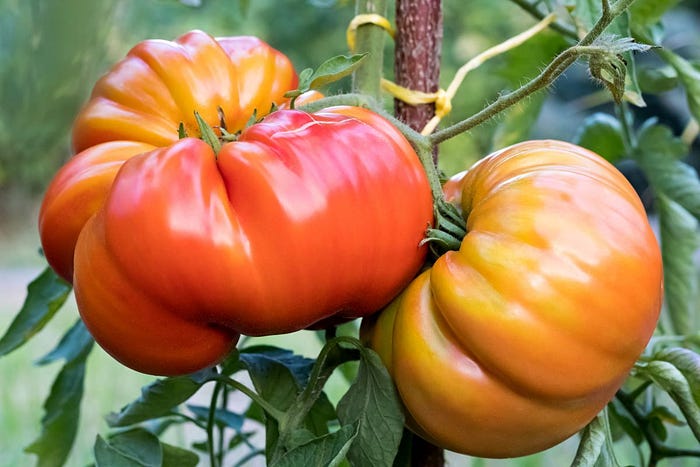Member-only story
16 Popular Heirloom Tomato Varieties

Heirloom tomatoes have become increasingly popular in recent years, and it’s easy to see why. They come in various sizes, shapes, and vibrant colors and boast rich, complex flavors. Keep reading to discover some of the best heirloom tomato varieties and learn about their flavor profiles, growth habits, and more.
Commercially grown tomatoes are usually selected for their appearance and durability rather than flavor. This results in the mealy, flavorless tomatoes that frequently line grocery store shelves. Furthermore, store bought tomatoes often lack vital nutrients because they’re picked while still green to ripen during shipment.
When tomatoes ripen on the vine, they contain more vitamins and minerals essential to a healthy diet. They are an exceptional source of folate, potassium, vitamin C, and vitamin K. They’re also rich in lycopene. This antioxidant reduces the risk of cancer and heart disease.
When you grow your own tomatoes, the superior flavor, texture, and overall quality are unmistakable. In this article, you’ll learn why many gardeners prefer planting tried-and-true heirloom tomato varieties. Let’s dig in!
What Are Heirloom Tomatoes?
Heirloom varieties have become considerably more prevalent in garden centers and farmers markets. But have you been wondering, “What are heirloom tomatoes?”
Heirloom fruits and vegetables come from traditional cultivars preserved through numerous generations by deliberate seed saving. These heirloom tomato varieties are usually at least 50 years old, and many are over 100 years old. Some heirloom seeds have been passed down through multiple generations of growers in a specific region. Also, various universities have developed others for their horticultural breeding programs.
As a rule, heirloom plants are open-pollinated, which means insects pollinate them, or they’re self-pollinating, like tomatoes, eggplants, peppers, peas, and beans. The pistils and stigma are in the same flower on self-pollinating plants, and pollen gets transferred by the wind moving them. However, a little help from pollinators doesn’t hurt.
Hybrid plants come from two cultivars intentionally cross-bred to generate offspring with the best traits of each…

